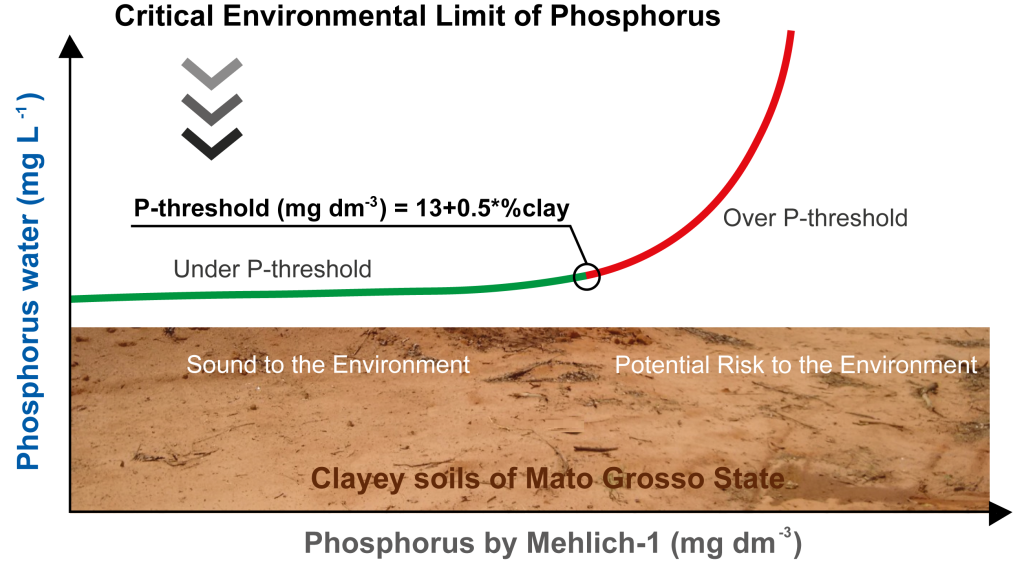Establishing environmental soil phosphorus thresholds to mitigate its transfer to water bodies in Mato Grosso State, Brazil
28/Nov/2023
ABSTRACT Excessive phosphorus (P) applications can increase nutrient levels in the soil, facilitating its transference to aquatic environments and causing contamination. Thus, the environmental P threshold (P-threshold) is a tool to establish a sound level of P in the soil, in which P values below the threshold are harmless to the environment. This study aimed to establish a P-threshold equation for the soils of Mato Grosso State, Brazil. Twenty samples of representative soils from the main swine production regions of […]
Heavy metals and pesticides in soils under different land-use patterns in neotropical high Andean Páramos
25/Apr/2022
ABSTRACT Páramos are unique strategic ecosystems in the neotropical region, above the upper limit of closed forest and below the lower limit of perpetual snow in the tropical mountains of Central and South America. Their soils are of particular importance for water regulation and carbon storage; however, thousands of peasants develop agricultural activities such as potato cultivation and livestock farming in these areas. This research aimed to evaluate the possible heavy metals contents (arsenic, cadmium, mercury, and lead) and pesticide […]
Relationships between Agriculture, Riparian Vegetation, and Surface Water Quality in Watersheds
21/Mar/2017
ABSTRACT Agricultural land use and degradation of natural vegetation in riparian zones can impair water quality. This study was conducted in seven agricultural watersheds in Ibirubá, RS, Brazil, with the following objectives: identify relationships between concentrations of soluble phosphorus (Psol) and nitrate (NO−3) in surface water and agricultural use of soil and current vegetation in riparian zones, and assess the risk of eutrophication. Water samples from the main watercourses in each watershed were collected monthly from 10/2013 to 6/2014. Current […]
SOIL PHOSPHORUS THRESHOLDS IN EVALUATING RISK OF ENVIRONMENTAL TRANSFER TO SURFACE WATERS IN SANTA CATARINA, BRAZIL
01/Jul/2015
The State of Santa Catarina, Brazil, has agricultural and livestock activities, such as pig farming, that are responsible for adding large amounts of phosphorus (P) to soils. However, a method is required to evaluate the environmental risk of these high soil P levels. One possible method for evaluating the environmental risk of P fertilization, whether organic or mineral, is to establish threshold levels of soil available P, measured by Mehlich-1 extractions, below which there is not a high risk of […]
Replication of an IVG protocol to estimate bioaccessible arsenic in materials from a gold mining area in Brazil
01/Aug/2012
Tests for bioaccessibility are useful in human health risk assessment. No research data with the objective of determining bioaccessible arsenic (As) in areas affected by gold mining and smelting activities have been published so far in Brazil. Samples were collected from four areas: a private natural land reserve of Cerrado; mine tailings; overburden; and refuse from gold smelting of a mining company in Paracatu, Minas Gerais. The total, bioaccessible and Mehlich-1-extractable As levels were determined. Based on the reproducibility and […]
Evaluation of sample preparation methods and optimization of nickel determination in vegetable tissues
01/Feb/2011
Nickel, although essential to plants, may be toxic to plants and animals. It is mainly assimilated by food ingestion. However, information about the average levels of elements (including Ni) in edible vegetables from different regions is still scarce in Brazil. The objectives of this study were to: (a) evaluate and optimize a method for preparation of vegetable tissue samples for Ni determination; (b) optimize the analytical procedures for determination by Flame Atomic Absorption Spectrometry (FAAS) and by Electrothermal Atomic Absorption […]
Soil phosphorus forms after successive pig slurry application in a native pasture
01/Aug/2008
The swine industry generates large amounts of pig slurry (PS), which is reused as agricultural fertilizer. However, if applied at excessive rates, pig slurry becomes a severe environmental pollutant. The objective of this study was to evaluate forms of soil phosphorus accumulation after successive swine manure applications. The experiment was installed in 1995, in an area of native pasture. Rates of 0, 20 and 40 m3 ha-1 of PS were applied periodically (at 45 to 60 days intervals) during five […]
Effects of sewage sludge applications on heavy metal contents in corn leaves and grains
01/Jun/2006
Sewage sludge is an important source of nutrients for crops, although the heavy metal contents can limit its use in agricultural soils. The objective of this study was to evaluate the effects of doses of sewage sludge (from the Treatment Stations of Barueri (LB) and Franca (LF), São Paulo State, Brazil) on heavy metal concentration in corn leaves and grains. The experiment was carried out at the Experimental Area of the Embrapa Environment, in Jaguariúna, state of São Paulo, from […]
Characterization of gold mine tailing to evaluate the arsenic and heavy metal solubility and local revegetation
01/Feb/2004
Dumps of waste and sterile matter from mine activities are potential sources of environmental contamination with their contents of heavy metals and arsenic, especially when these materials contain sulfide minerals and high metal levels. The objective of this study was the characterization of refuse from a gold mine area in the State of Minas Gerais, Brazil, in order to evaluate acid drainage and metal solubilization problems, and local revegetation planning. Surface samples (0-20 cm) were collected and submitted to routine […]


